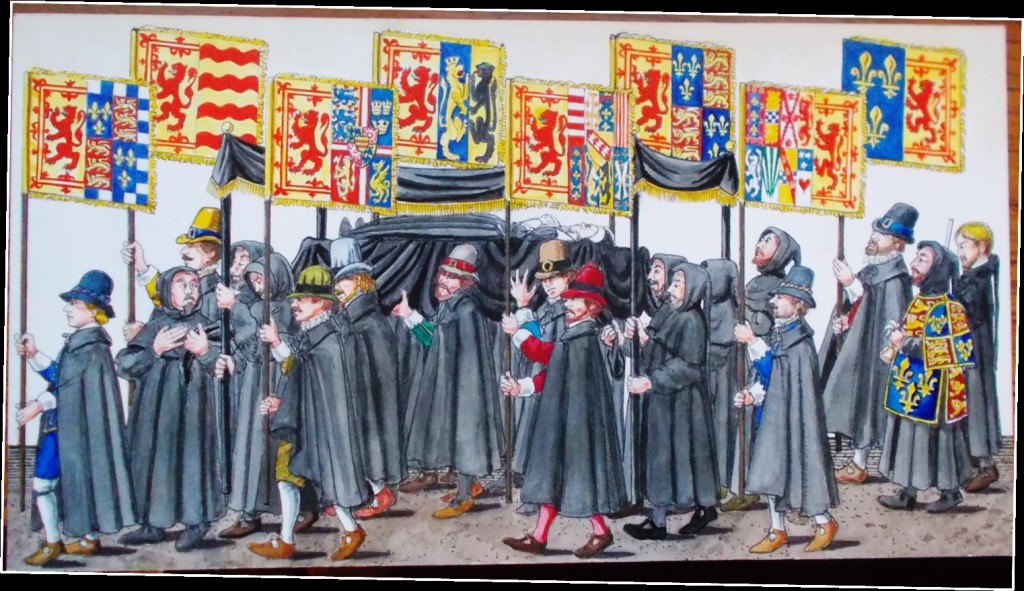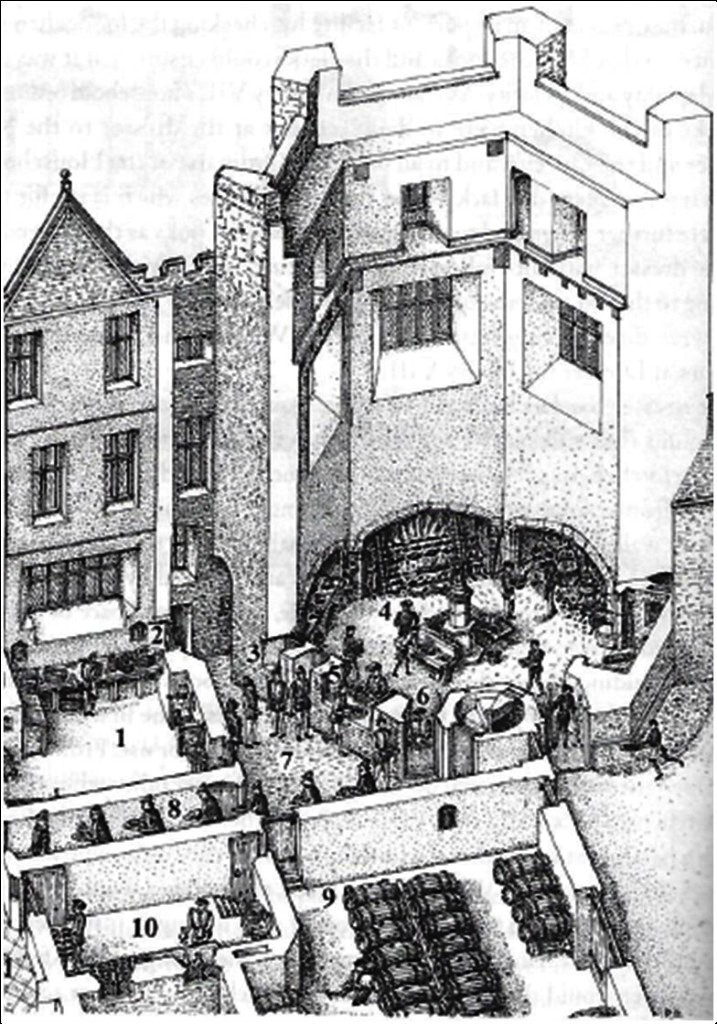A talk by John Malden
November 2022
This month features excerpts from a stimulating and professionally delivered talk to DDHS by John Malden who is President of the Heraldry Society of Scotland. John Malden began by telling the audience that very little was known about the funeral, but that he had studied archives relating to it and these provided the basis for the talk, which he had then lavishly illustrated.

The photo above – best enlarged – shows a group of Heralds carrying the Helmet; the Targe or shield; the Sword and the Tabard which were presented to the Chief Mourner at the funeral. At the front are two yeomen of the guard, then the helm and the crest held by Sir William Segar, followed by heralds carrying the sword and the tabard. As you can see, this was a colourful procession with coats of arms relating to Mary on display.

The 2nd photo shown in the talk displays the effigy of Mary surrounded by the flags representing the Queen’s ancestry and marriages. At the front the arms of her parents James IV and Margaret Tudor and at the rear as Queen of France. All of these banners would have been presented to the chief mourner and used to decorate the hearse. The speaker explained that the hearse was a structure which held the coffin in the cathedral and not the coffin’s carriage as we know it now. Mary Queen of Scots, John Malden told the audience, was buried soon after her execution (by beheading) and an effigy was used at the state funeral. The speaker then explained that rumours of Mary being buried without her head were completely untrue.

At the foot of this slide, John Malden had “To prepare two meals for some 300 mourners, and food for staff –59 staff were sent from the Royal Court and 76 employed locally. 52 capons, 39 ducklings, 12 gulls, 18 heron, 90 mallards, 163 teals, 192 rabbits, 18 bitterns; 4 oxen = 512 servings; 40 mutton = 1,600 servings; 1 ton of Gascony claret = 1,680 pints; 10 tons 1 hogshead of beer = 17,220 pints; 3 tons 1 pipe ale = 5,880 pints; 9 Quarters & 3 bushels wheat =c.2 tons to make c.2,000 loaves of bread”. The speaker added that no-one drank the local water and that those preparing the feasting for mourners were there for a week prior to the event.
Note: The illustrations in colour were done by an artist associate of John Malden.
You must be logged in to post a comment.